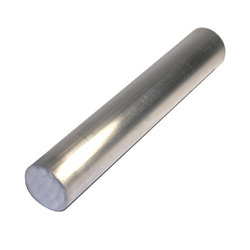Aluminium is a lightweight metal and has a vast usage in a variety of applications as rods. You can find them in almost every type of electrical gadgets. The metal is a silvery white colored product having a tenacious oxide coating. The aluminium rod needs to be twisted with correct precision to be used in a safe and effective manner.
Properties of aluminium rod:
Corrosion resistant:
Aluminium when bared to air, generates a protective layer of aluminium oxide on its surface which works as a powerful resistant to corrosion. This is one primary reason for its wide usage for external applications. Though it is less resistant to alkali, the metal is a good resistant to acids.
Electrical conductivity:
The metal comes with high conductivity properties that enables it to be used as an electric conductor. It has the capability to conduct twice the capacity of electricity than the other commonly used metals.
Density:
The metal has lower density in comparison to steel, copper etc. and this makes it a lightweight metal which allows greater workload capabilities at lower costs.
As an alloy:
On its own, the metal does not exhibit high tensile strength so it is generally blended with either elements like manganese while being used in certain applications to make it more sturdy and durable. The malleability increases as the temperature lowers which allows the element ideal in colder environments.
A reflector:
Aluminium is a good indicator of both infrared and ultraviolet rays with light reflectivity up to 80% hence is widely applied in light fittings. It also works as a good insulator.
Recyclable:
Aluminium products are durable and have a long life. Though, it is energy intensive, the used aluminium melting can be done is a quick process and can be reused in its full form.
Environment friendly:
Aluminium is nontoxic and hygienic. It is easy to clean with all types of cleaning agents like solvents, acids, cleaning agents.
Weather resistant:
Aluminium rods are not reactive to any type of weather. It is corrosion-resistant, water proof, rustproof. It works very well in low temperatures and retains its toughness and hardness even when the temperature is increased.
The manufactures take minute care while bending the aluminium rod. It must be done in a precise and accurate way or the rods will not serve the purpose for which it is being used. It is not something that can be done at home or one of the DIY (do it yourself) stuffs. It should not be used while it is still hot as it could damage the components on which you intend to apply it.
Aluminium rods are also used to supply liquids to water treatment plants, food processing units, heat exchangers, and other similar industrial applications. Being more thermal conducive than steel, the aluminium products can be used in both cooling and heating applications. Because of its nontoxic properties, the metal is extensively used in the manufacture of several cooking utensils and appliances.
Aluminium is not too expensive and with its exclusive features works as a viable option to be used across many applications in different industries.